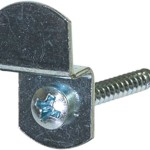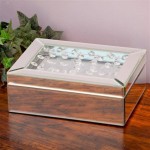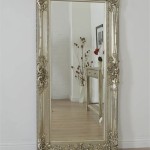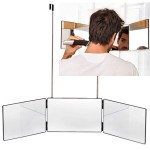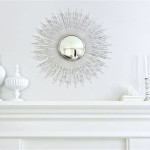Black Spots on Old Mirror Glass: Causes and Treatments
Over time, antique and vintage mirrors, once gleaming reflections of beauty, can develop enigmatic black spots that mar their aesthetic appeal. These spots, often appearing as dark, irregular patches on the surface of the mirror glass, can be perplexing to both collectors and homeowners. While the sight of these blemishes may cause concern, understanding their origins can guide effective treatment options for restoring the mirror's brilliance. This article will delve into the common causes of black spots on old mirror glass, explore their nature, and offer insights into potential solutions for removing or mitigating these imperfections.
The Chemistry of Silvering
To understand the formation of black spots, it's crucial to recognize the historical process of silvering. Prior to modern mirror manufacturing techniques, antique mirrors were crafted using a delicate and complex process involving silvering the surface of glass. This method typically involved applying a thin layer of silver nitrate onto the glass, followed by a reducing agent like formaldehyde. The chemical reaction resulted in a metallic coating of silver, creating the reflective surface we associate with mirrors.
However, this silvering process is susceptible to environmental factors and time. Over decades, the silver layer can oxidize, leading to the formation of silver sulfide, which manifests as black spots. These spots are essentially a chemical reaction between the silver and sulfur atoms, leading to a discoloration of the mirror's surface.
Causes of Black Spots
The presence of black spots on old mirror glass is primarily attributed to a combination of factors:
1. Exposure to Sulfur: Perhaps the most significant cause is exposure to sulfur. Sulfur, a prevalent element in air pollution, reacts with the silver coating, forming silver sulfide, which appears as black spots. Environments with high levels of sulfur dioxide, often found in industrial areas or near volcanic activity, are particularly susceptible to this phenomenon.
2. Humidity and Temperature: Variations in humidity and temperature can accelerate the oxidation process. Fluctuations in these environmental conditions create an ideal environment for chemical reactions to occur on the silver surface, promoting the formation of black spots.
3. Improper Storage and Handling: Improper storage and handling methods can contribute to the development of black spots. Exposure to direct sunlight, dust, and airborne particles can accelerate the oxidation process and increase the likelihood of blemishes.
4. Age: Simply put, the older the mirror, the more susceptible it is to black spot formation. The passage of time allows for a greater accumulation of sulfur and other elements, leading to chemical reactions that discolor the silvering.
Treatment Options for Black Spots
While eliminating black spots entirely may be challenging, various techniques can be employed to remove, mitigate, or camouflage these blemishes:
1. Professional Cleaning: Enlisting the help of a professional mirror restoration specialist can yield the best results. These experts possess specialized cleaning solutions and techniques to gently remove accumulated dirt and grime while minimizing damage to the delicate silvering.
2. DIY Cleaning Solutions: For less severe cases, DIY cleaning solutions can be attempted with caution. A mix of distilled water and a mild ammonia solution can be used to wipe down the mirror surface. It is crucial to avoid harsh chemicals and abrasive materials that could further damage the silvering.
3. Protective Coatings: Applying a protective coating to the mirror surface can help prevent further oxidation and black spot formation. This coating acts as a barrier against environmental elements, safeguarding the silvering from damage.
4. Camouflaging: For deeply embedded black spots or those resistant to cleaning, camouflaging techniques can be employed. This may involve repainting the frame to create a visual distraction or strategically placing decorative elements to conceal the blemishes.
While the presence of black spots on old mirror glass can be disheartening, understanding their origins and utilizing appropriate cleaning methods can help restore their brilliance.

Fixing Black Spots On Mirrors How To Clean Mirror Frame Diy Fix A

Fixing Black Spots On Mirrors How To Clean Mirror Frame Diy Fix A

Repair Or Replace Desilvering Bathroom Mirror Solution For Black Edges

How To Antique A Mirror Easy No Scratching The Navage Patch

How To Fix Black Spots On Old Mirrors Hunker

How To Repair Desilvering What Do About Black Edges On Mirrors

How To Remove Dark Spots From Antique Mirrors

How To Repair Desilvering What Do About Black Edges On Mirrors
Mirror Resilvering Frank Wright Glass

How To Remove Dark Spots From Antique Mirrors Mirror Painting Aesthetic

